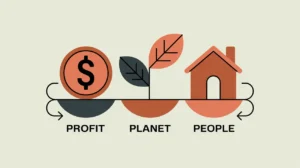Importance of Thought Leadership
Thought leadership shapes ideas, narratives, and agendas within sectors and society at large. It positions individuals or organizations as trusted voices who influence how problems are understood and how solutions are prioritized. In development and social change, thought leadership matters because it directs attention, resources, and legitimacy toward innovative approaches, while also challenging entrenched assumptions.
Definition and Features
Thought leadership refers to the ability to influence others through ideas, insights, and expertise that frame debates and inspire action. Its defining features include:
- Expertise – grounded in deep knowledge or lived experience.
- Credibility – recognized by peers, stakeholders, and broader audiences.
- Influence – shapes agendas, decisions, and collective priorities.
- Innovation – introduces new frameworks, concepts, or narratives.
- Visibility – amplified through writing, speaking, and media presence.
How this Works in Practice
In practice, thought leadership is expressed through published research, keynote talks, articles in influential outlets, or convening platforms that guide sector conversations. For example, academic leaders may frame new paradigms for public health, while nonprofit leaders publish case studies that influence philanthropic strategy. Social media has expanded opportunities for proximate voices to emerge as thought leaders. Challenges include superficial branding without substance, exclusion of marginalized voices, and the tension between visibility and collective action.
Implications for Social Innovation
Thought leadership advances social innovation by opening intellectual and cultural space for new solutions. It legitimizes proximate ideas, attracts attention from funders, and shifts narratives that shape policy and practice. For practitioners and funders, cultivating thought leadership involves elevating diverse voices, supporting authentic storytelling, and connecting ideas to action. Ultimately, thought leadership transforms influence into advantage, ensuring that innovation resonates across systems and contributes to lasting change.







